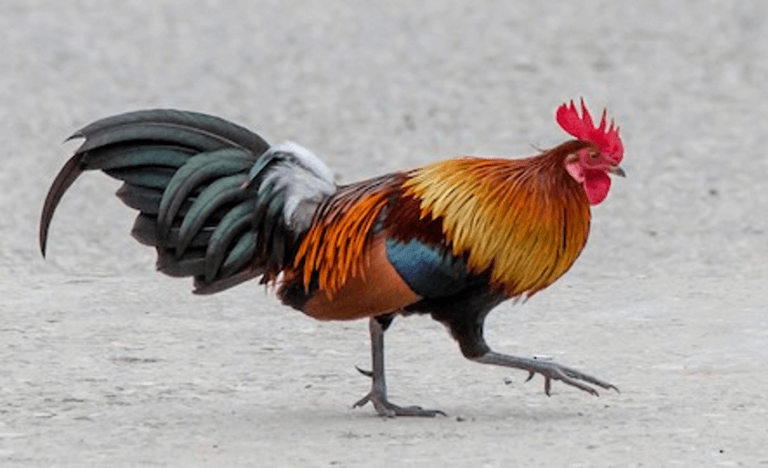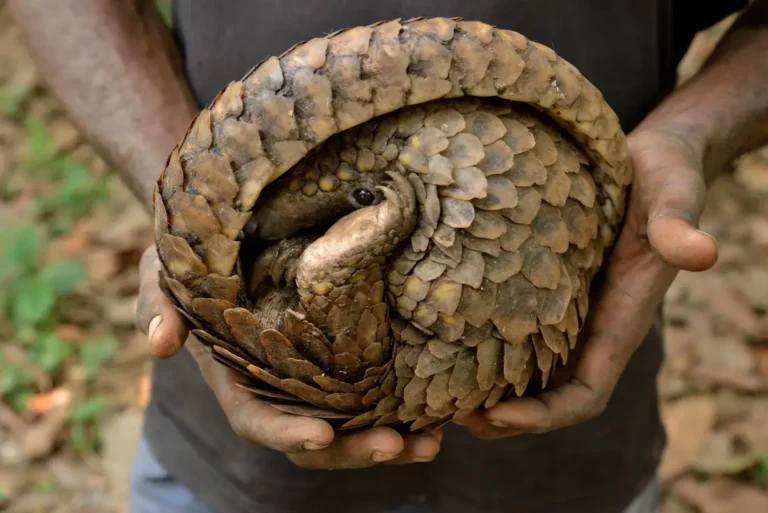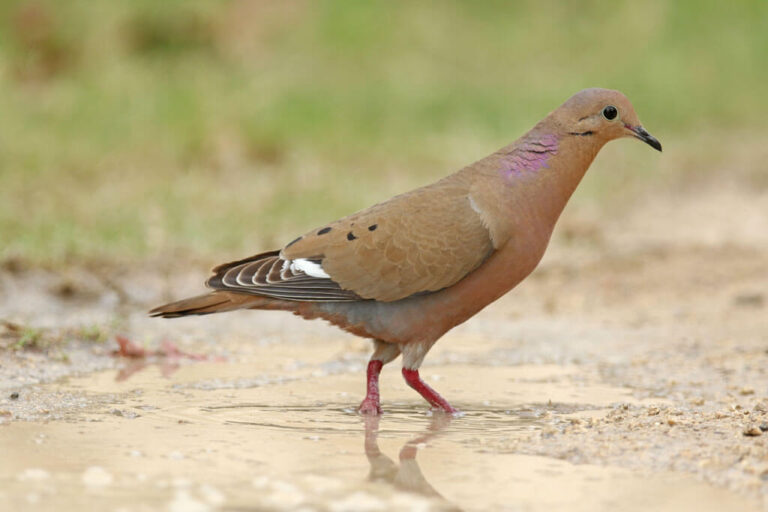Junglefowl: Facts, Behavior, and Evolution of Wild Ancestors
The Junglefowl is a fascinating bird species best known as the wild ancestor of domesticated chickens. These birds are native to South and Southeast Asia and play an essential role in the local ecosystems. This article will explore the Junglefowl’s scientific classification, physical characteristics, habitat, behavior, diet, reproduction, predators, and conservation status.
We’ll also dive into its evolutionary history, its relationship with humans, and some interesting facts about this bird species.
Contents
Scientific Classification
- Kingdom: Animalia
- Phylum: Chordata
- Class: Aves
- Order: Galliformes
- Family: Phasianidae
- Genus: Gallus
- Species:
- Gallus gallus (Red Junglefowl)
- Gallus sonneratii (Grey Junglefowl)
- Gallus varius (Green Junglefowl)
- Gallus Lafayette (Sri Lankan Junglefowl)
The Red Junglefowl (Gallus gallus) is the most well-known species, as it is the primary ancestor of domesticated chickens.
Physical Characteristics
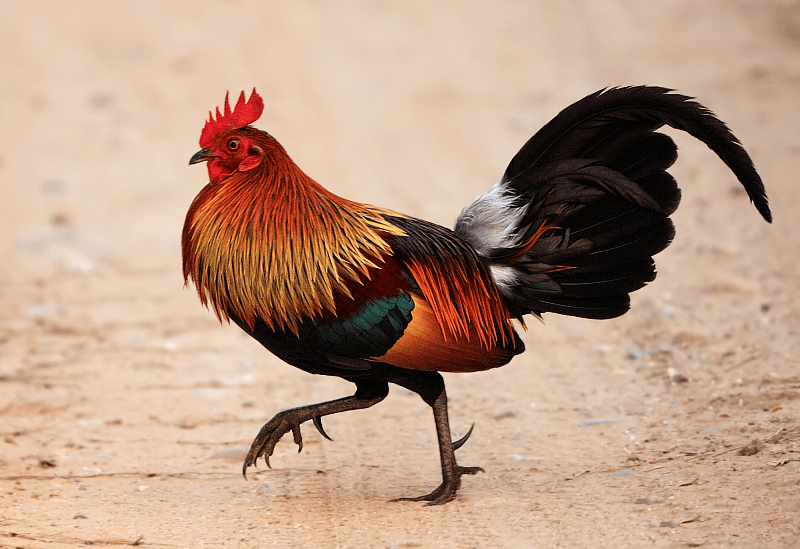
Junglefowl have a striking appearance, with vivid colors and distinct features that make them stand out in their natural habitat.
- Size: Junglefowl typically ranges from 43 to 70 cm (17 to 27 inches) in length.
- Weight: They weigh between 500 grams and 1.5 kilograms, with males generally more prominent than females.
- Plumage: Males have brilliant plumage with red, orange, green, black, and metallic hues. Females are more muted, with brownish feathers that provide camouflage in their environment.
- Crest and Comb: Males have prominent combs and wattles used for mating displays. These can vary in color, most often red.
- Tail: Males have long, elegant tail feathers that can curve dramatically. These tails are shorter in females.
Habitat
Junglefowl are native to the tropical and subtropical regions of South and Southeast Asia, where they thrive in:
- Forests: Particularly in dense jungles and forests, both tropical and subtropical.
- Grasslands and Shrublands: They can also be found in open grasslands and scrublands, especially at forest edges.
- Altitude: They are commonly found at elevations from sea level up to 2,000 meters (6,600 feet).
Behavior
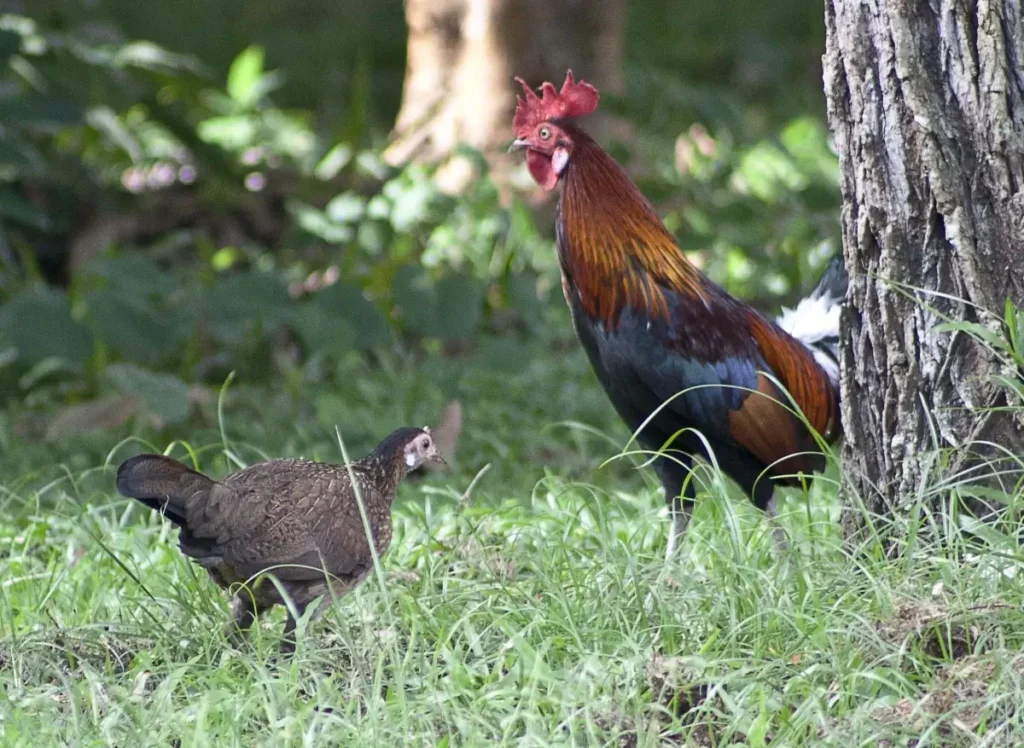
Junglefowl are ground-dwelling birds and exhibit both social and territorial behaviors.
- Social Structure: They live in small groups known as flocks, typically consisting of one dominant male and several females. Juveniles often stay with the flock until they reach maturity.
- Vocalization: The Red Junglefowl is famous for its “crow,” a loud call that males use to establish territory and attract females.
- Foraging: They spend most of their time foraging on the ground, scratching the soil for food.
- Flight: Though primarily ground-dwelling, Junglefowl can fly short distances to escape predators or roost in trees.
Diet
Junglefowl are omnivorous birds, and their diet is diverse.
- Seeds and Grains: They feed on various seeds and grains, which comprise a significant portion of their diet.
- Insects: They consume insects like beetles, ants, and termites, which provide protein.
- Fruits and Vegetation: Junglefowl also eat fruits, berries, and tender shoots of plants.
- Foraging Behavior: They forage by scratching the forest floor to uncover food, which is a behavior passed on to domesticated chickens.
Reproduction
Junglefowl’s reproductive habits are similar to those of their domesticated counterparts.
- Breeding Season: Breeding usually occurs during the dry season, varying by location.
- Mating Rituals: Males perform elaborate displays, which include crowing, spreading their feathers, and strutting to impress females.
- Nesting: Females build simple nests on the ground, usually hidden among dense vegetation.
- Eggs: The female typically lays between 4 to 7 eggs, which she incubates for about 21 days.
- Chicks: Upon hatching, the chicks are precocial, meaning they are well-developed and can leave the nest almost immediately to forage with their mother.
Predators
Junglefowl face a range of predators in the wild.
- Natural Predators: These include large birds of prey (eagles, hawks) mammals such as wild cats, foxes, and snakes, which often target eggs and young chicks.
- Human Threats: In some areas, humans hunt Junglefowl for food, feathers, and sport.
Conservation Status
- Red Junglefowl: The Red Junglefowl is classified as “Least Concern” by the International Union for Conservation of Nature (IUCN). However, their population is threatened by habitat loss and hybridization with domestic chickens.
- Other Species: The Grey Junglefowl and Sri Lankan Junglefowl are similarly classified as “Least Concern,” though their populations are threatened in specific regions.
- Conservation Efforts: Some regions have established protected areas to safeguard these birds, and there are ongoing efforts to prevent genetic dilution from crossbreeding with domestic chickens.
Evolutionary History
The Junglefowl’s evolutionary history is closely tied to the domestication of chickens. Genetic studies have revealed that the domesticated chicken (Gallus gallus domesticus) descended from the Red Junglefowl approximately 7,000 to 10,000 years ago in Southeast Asia.
- Domestication: Humans began domesticating Junglefowl for their meat, eggs, and feathers. Over thousands of years, selective breeding led to the variety of chicken breeds we see today.
- Genetic Diversity: The domesticated chicken retains much of the genetic makeup of the Red Junglefowl, but hybridization and selective breeding have introduced significant changes in size, temperament, and productivity.
Relationship with Humans
Junglefowl have a long and complex relationship with humans.
- Domestication: As the ancestors of domestic chickens, Junglefowl has enormously impacted human civilization, providing a reliable food source and even playing roles in religious and cultural practices.
- Cultural Significance: In some regions, the Junglefowl is considered a symbol of masculinity and strength. They have been featured in folklore, traditional art, and cockfighting (though controversial today).
- Hybridization Threat: In areas where domestic chickens roam freely, there is concern about hybridization with wild Junglefowl, which threatens the genetic purity of the wild species.
Interesting Facts
- Ancestor of Chickens: The domesticated chicken is one of Earth’s most numerous and widespread animals, thanks to its Junglefowl ancestors.
- Escape Artists: Junglefowl are quick to flee when threatened, and their ability to fly short distances allows them to escape predators.
- Elaborate Courtship: The male Junglefowl’s courtship displays are intricate, involving vocalizations and visual displays to attract mates.
- Nocturnal Roosting: While they forage during the day, Junglefowl roost in trees at night to avoid ground-based predators.
Conclusion
The Junglefowl is a remarkable bird species with a rich evolutionary history and a deep connection to human civilization. From its vibrant physical characteristics to its complex social behavior, this bird has had a lasting impact on its natural ecosystems and human development. As we continue to understand more about its habits and conservation needs, protecting the wild Junglefowl populations and their habitats is crucial to ensure their survival for generations to come.
- Golden Retriever Pros and Cons: What Every Pet Parent Should Know - 15 September 2025
- Cane Corso Dog Breed: Health, Care, and Lifespan - 14 September 2025
- Catahoula Leopard Dogs: Description, Temperament, Lifespan, & Facts - 21 July 2025

